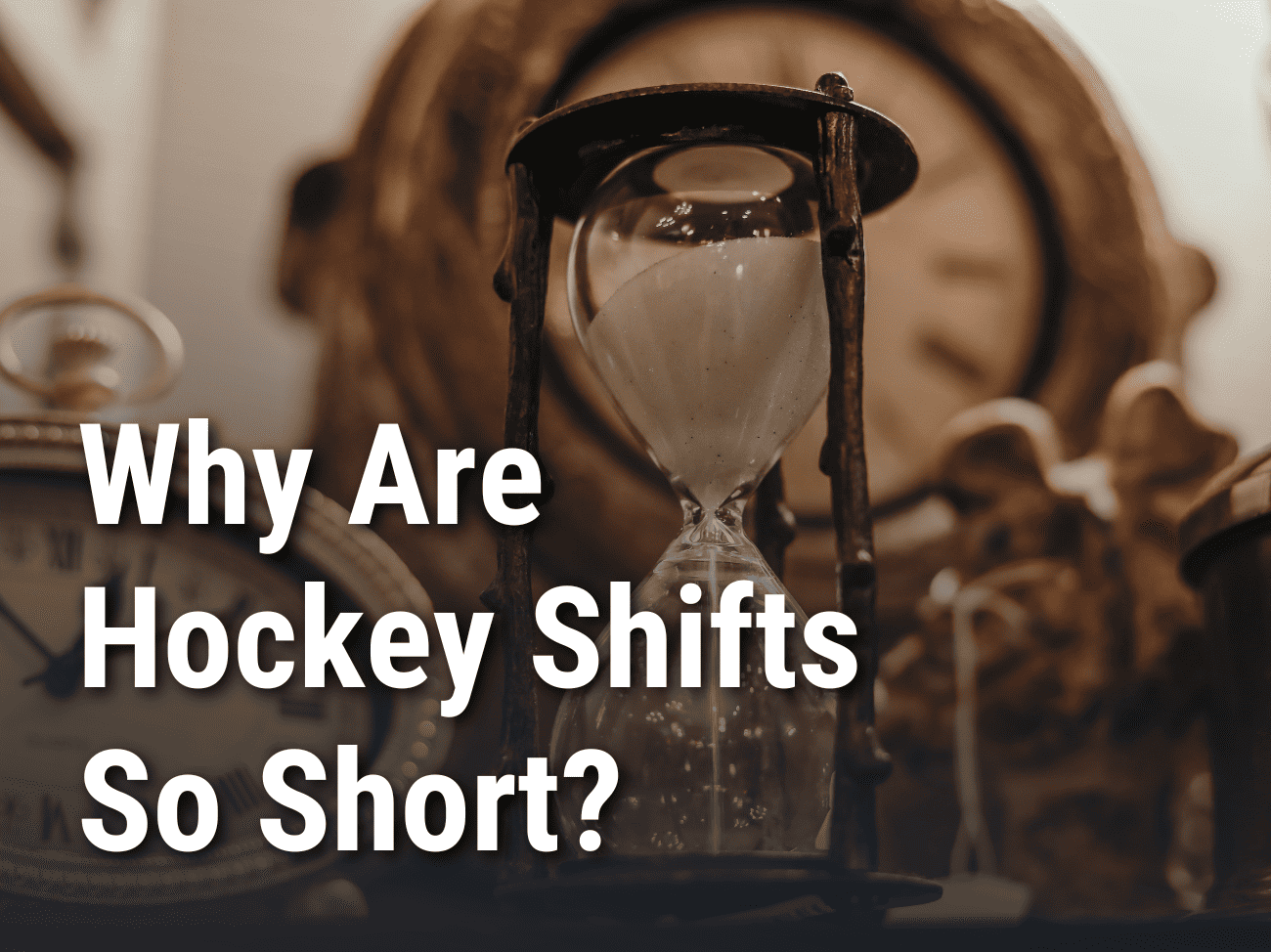In the fast-paced world of ice hockey, the intriguing brevity of player shifts raises questions about the physiological, strategic, and tactical factors driving the sport’s uniquely short bursts of action.
Why are hockey shifts so short?
Hockey shifts are so short because of the cardio-intensive nature of the sport. Hockey is very tiring. And in order to maintain a high level of intensity across an entire team, lines must constantly be rotated.

Why Are Hockey Shifts So Short?
Hockey shifts are intentionally kept short for a variety of interconnected reasons that encompass both physiological and strategic considerations. Understanding the factors behind the sport’s brief player rotations sheds light on the intricate dynamics that define ice hockey.
- Physical Demands
- Hockey is an incredibly demanding sport that places immense strain on a player’s cardiovascular system, muscles, and energy stores. The intense bursts of skating, sharp turns, rapid changes in direction, and physical contact require a substantial amount of energy. Short shifts help players manage their energy expenditure and prevent fatigue, enabling them to sustain a high level of performance throughout the game.
- Anaerobic Nature
- Ice hockey is primarily an anaerobic sport, relying on short bursts of high-intensity effort rather than sustained endurance. Players engage in quick sprints, rapid acceleration, and sudden stops, which heavily rely on the anaerobic energy system. Short shifts align with this anaerobic nature by allowing players to exert themselves at maximum intensity for the duration of their shift, avoiding a drop in performance due to the accumulation of lactic acid and fatigue.
- Maximizing Intensity
- Short shifts contribute to maintaining the high pace and intensity that define ice hockey. Players can give their all during a short shift, enabling them to deliver powerful shots, execute precise passes, and engage in strong defensive plays. By limiting the duration of shifts, coaches ensure that players are consistently performing at their peak, making the game more exhilarating for both players and spectators.
- Strategic Flexibility
- Frequent line changes allow coaches to adapt to various in-game situations. Different lines are designed with specific strengths and roles in mind, such as offensive pressure, defensive stability, or penalty killing. Short shifts enable coaches to rotate lines more frequently, ensuring that players with the right skills are on the ice at the right moments. This strategic flexibility can exploit opponents’ weaknesses and capitalize on opportunities.
- Reducing Injuries
- Hockey is a physical sport with a risk of injuries. Short shifts help mitigate the potential for overexertion and reduce the likelihood of players becoming fatigued, which can lead to poor decision-making and increased susceptibility to injuries.
In essence, the practice of keeping hockey shifts short is a finely tuned balance between optimizing player performance, maintaining strategic flexibility, and preserving energy levels. This approach aligns with the sport’s nature as a fast-paced, physically demanding, and tactically intricate game, contributing to its unique and captivating appeal.
How Long Is A Shift In Hockey?
Hockey shifts typically last around 35 to 45 seconds on average in professional leagues like the NHL (National Hockey League).
However, the exact duration of shifts can vary based on several factors, including game situations, player role, team strategies, and coaching decisions.
Some shifts might be shorter, around 20 seconds, especially during high-intensity moments or when players are fatigued, while others could extend closer to a minute if the situation allows. Some shifts may be longer, around 70 seconds, especially during powerplays and the end of games.

The primary goal is to maintain a balance between player energy levels and on-ice performance throughout the game.
In recreational or amateur hockey leagues, shifts tend to be longer compared to professional leagues like the NHL. Shifts in recreational hockey can often last anywhere from 1 to 2 minutes or even longer.
How Do Hockey Players Know When To Change Lines?
Hockey players change lines based on a combination of factors, including their energy levels, temporal considerations, and communication with their linemates. The decision to change lines is often a dynamic process that involves both individual awareness and teamwork.
- Energy and Fatigue
- One of the most common triggers for changing lines is player fatigue. As players expend energy through skating, physical play, and executing plays, their energy levels diminish. When a player feels they are becoming fatigued and might not be able to perform at their best, they often signal to the bench for a line change. This helps maintain the overall pace and intensity of the game.
- Shift Duration
- While shifts are generally shorter in professional hockey, players still have a sense of how long they’ve been on the ice. Once they approach the end of their shift duration, they become more vigilant about positioning themselves near the bench for a seamless change.
- Line Coordination
- Hockey players sometimes use their linemates to determine when to change. Meaning, if your linemates have changed, and the next line of players is already out, it’s usually a sign that you should go for a change.
Overall, hockey players change lines based on a combination of factors, including their own physical condition, communication with teammates and coaches, game strategy, and situational awareness. The ability to effectively manage line changes is a crucial skill that contributes to the fluidity and success of a hockey team’s performance.

What Is TOI In Hockey?
TOI stands for “Time On Ice” in hockey.
It refers to the amount of time a player spends actively participating in a game, including shifts on the ice. TOI is measured in minutes and seconds and provides valuable insight into how much a player is contributing to their team’s performance.
TOI can be divided into different categories to provide a more comprehensive view of a player’s role during a game:
- Total TOI
- This is the overall amount of time a player spends on the ice throughout the game, combining all shifts they take part in.
- Even Strength TOI
- This measures the time a player spends on the ice when both teams have the same number of skaters. It excludes time spent on power plays or penalty kills.
- Power Play TOI
- This indicates the amount of time a player spends on the ice when their team has a numerical advantage due to an opponent’s penalty.
- Short-Handed TOI
- This is the time a player spends on the ice when their team is shorthanded due to a penalty and has fewer players than the opponent.
- Overtime TOI
- In games that go into overtime, this category measures the time a player spends on the ice during the extra period.
TOI is an important statistic for evaluating player performance and effectiveness.
It helps coaches make informed decisions about line combinations, rest periods, and strategic adjustments based on how much ice time each player is receiving. Additionally, TOI can provide insights into a player’s endurance, versatility, and overall impact on the game.


Leave a Reply